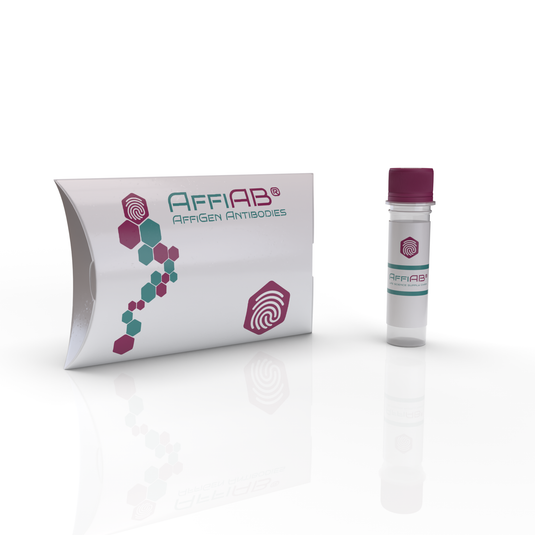Experience superb sensitivity and specificity in your research with AffiAB® Goat Anti-Rab20 Polyclonal IgG Antibody. This high-quality antibody provides researchers with a reliable tool for maximizing the accuracy and efficiency of their experiments.
The AffiAB® Goat Anti-Rab20 Polyclonal IgG Antibody is an antibody specifically designed to recognize and bind to the Rab20 protein. Rab20 is a member of the Rab family of small GTPases, which play crucial roles in regulating various intracellular processes, including vesicle trafficking, organelle dynamics, and signal transduction.
This polyclonal antibody is generated by immunizing goats with purified Rab20 protein or a specific peptide sequence derived from Rab20. The resulting antibodies are then purified from goat serum to ensure high specificity and quality.
The AffiAB® Goat Anti-Rab20 Polyclonal IgG Antibody is widely used in research applications to investigate the expression, localization, and function of Rab20 in different cellular contexts. By detecting and visualizing Rab20, researchers can gain insights into its involvement in vesicle trafficking pathways, organelle dynamics, and cellular signaling processes.
Researchers commonly employ techniques such as immunoblotting, immunofluorescence, immunohistochemistry, and immunoprecipitation with this antibody. These techniques allow for the analysis of Rab20 protein expression, subcellular localization, and interactions with other proteins or cellular components.
It is important to note that the AffiAB® Goat Anti-Rab20 Polyclonal IgG Antibody specifically targets Rab20 and may not cross-react with other Rab proteins or related molecules. Researchers should perform validation experiments and include appropriate controls to ensure the antibody's performance and specificity in their specific experimental conditions.
In summary, the AffiAB® Goat Anti-Rab20 Polyclonal IgG Antibody is a valuable tool for studying the expression, localization, and function of Rab20 in various cellular processes. By targeting Rab20, researchers can gain insights into its roles in vesicle trafficking, organelle dynamics, and cellular signaling, contributing to our understanding of intracellular mechanisms and cellular physiology.

